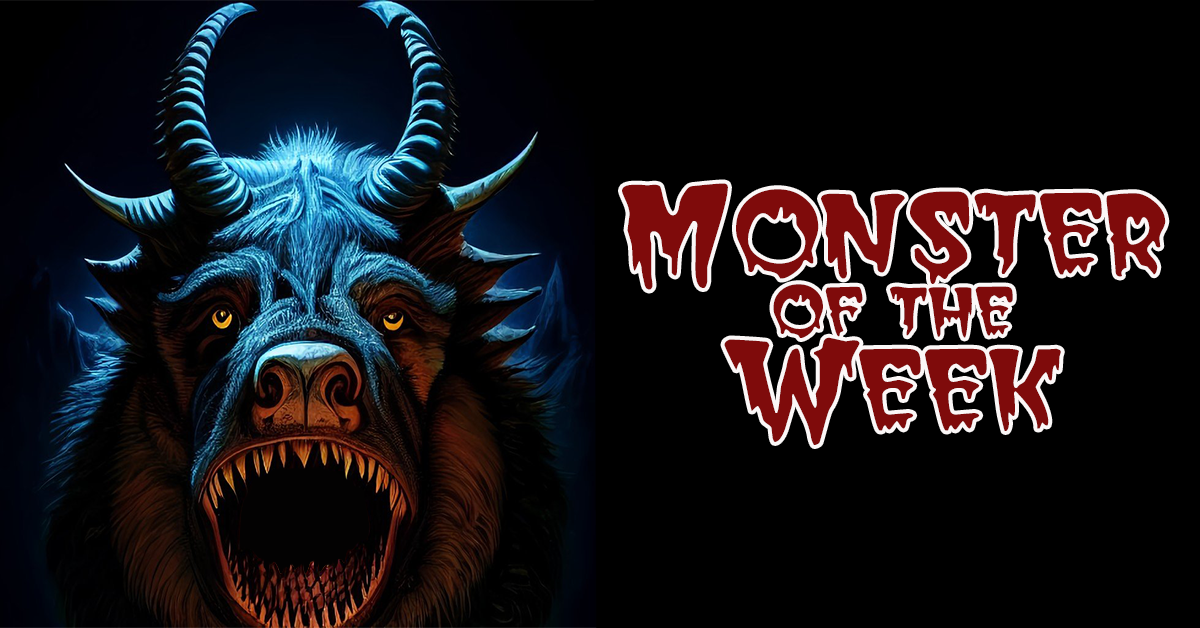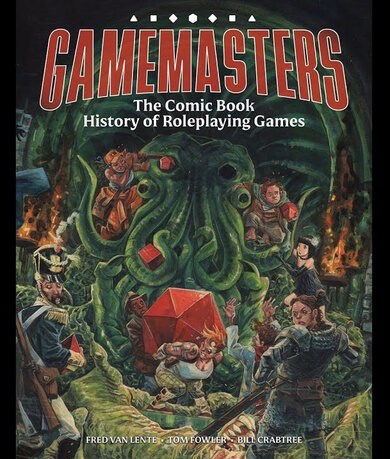We may earn money or products from the companies mentioned in this post.
You’ve just bought a new RPG for your group to try out, and if it’s organized like most RPG rulebooks there’s a players’ section and a GM’s section. If the game is at all well-designed, the GM’s section has tons of useful information to help you figure out what you’re supposed to do both before and during the game. There will be rules you need to know, tips on using the built-in conflicts of the game world as hooks for adventures and campaigns, formulas for coming up with the right level of challenge, ideas to help you set the tone and mood during the game (horror games in particular like to talk about music and lighting), tricks for making action resolution easier, advice on creating memorable NPCs, and lots of other stuff. In the players’ section, you’ll find–well–setting background and basic game mechanics.
Ok, some games go a little farther than that. Sometimes the players’ section also gives you a few paragraphs about creating a character backstory or coming up with character goals and story hooks, but it firmly falls into the preparatory “character creation” step of role-playing. If the rules tell you anything at all about how to play your character once the game begins, it’s all very generic surface-level characterization stuff, like “use an accent” or “give the character a distinctive mannerism or nervous tick” or “masturbate vigorously when your character triumphs.” Most game books tell you how to create a character sketch, but offer very little information about how to tell a story with that character. They help you create an action figure, but don’t tell you how to play with it. If you’re mostly interested in the strategy game aspect of role-playing (hacking monsters, solving puzzles, that kind of thing), that’s probably all you need. If you want to focus more on storytelling, it might not cut it.
You might be inclined to think that game books don’t talk about how to tell your character’s story because people can figure that out on their own. After all, it’s not like you have to give a kid instructions on how to use an action figure. The problem is that an RPG is not the same as playing childhood imagination games, no matter how many cookie-cutter “What Is Role Playing?” sections claim otherwise. There are a enough similarities that a lot of people can make the jump, but there are also enough differences that not everyone can figure out how to make their character and that character’s story a real part of the game. How many players have you seen show up to a game with pages and pages of character background that never comes into play during the game? Or worse, extensively detailed characters that they try to shoehorn into a game they don’t fit into well at all?
To tell a story with a character, you need three things. The first is a character that the audience (in this case, the other players) can identify with in some way. This is the kind of “don’t just make a dead-eyed murderhobo” stuff that lots of game books (and thousands of gaming articles and blogs) have covered endlessly, so there’s no need to waste ink on it here. The second is the sense that the character fits into the group: giving the character a reason to be there, the group a reason to keep him around, and building relationships between the characters. This often happens naturally, and can be improved by making sure everyone knows the premise of the game and building connections between PCs from the start, either by working out more than just who has to be the cleric during character creation or by using something like Dungeon World’s Bonds mechanic. Most groups have no problem with players talking about the game before it starts, it’s talking about the game after the characters have left the tavern that some people have a problem with.
For some games, that’s all you need. A mission (the story provided by the GM, whether in the form of individual adventures or an over-arching plotline), some characterization, and a sense of group unity were the key ingredients for most TV shows and movies until around the turn of the century. The thing that’s missing is the character’s story. Without character-driven subplots, the character doesn’t really have a life of his own. The character only exists within the context of the group and the story that the GM has set up (and sometime he’s only involved in that story because he happens to be a PC). Especially in today’s world of seasonal (as opposed to episodic) television and cinematic universes where every major character has their own story that weaves in and out of the main plotline, more and more gamers want their characters to have arcs and subplots as well, and that’s the thing that most RPG books don’t really explain how to pull off.
Most game books give the GM all kinds of information about telling the main story. Many also give the players good information for providing set-up for the character’s story (those pages and pages of background that never become relevant), but very few touch on how to make the background stuff an actual part of the game. Since story is traditionally the GM’s territory, the few games that talk about character-driven subplots put the pressure on the GM, assuming that it’s her job to bring all the stuff from the character background into the game. I think this is unfair to the GM (she already has enough to do) and to the player (who shouldn’t be completely dependent on the GM to tell his character’s story). It also ignores the reality of how most games work. In my experience, the players with fully-realized characters were the players who actively worked to tell their character’s story by playing character goals and introducing supporting characters, character-driven subplots, and other character-centric stuff in a way that naturally fit into the larger game (just forcing your way onto center stag annoys everyone). They also worked with the GM to make sure the player’s story got told.
The “working with the GM” part seems to be where most games drop the ball, in part because most game designers seem to be writing for an extreme (and mostly straw man) audience. For games aimed at the “let the dice fall where they may” crowd, who are nothing but power-gaming munchkins, any out-of-character discussion about the game is meta-gaming*, which is inherently evil, so talking about it would alienate the audience. On the other end of the spectrum are games aimed at the “drama club” crowd, where it’s taken for granted that every character is a special snowflake and the GM is not allowed to cause them any “agency”-destroying inconvenience without a drawn-out negotiation where everyone talks about their feelings. These games either talk about character subplots in vague terms or just assume that anyone playing them already knows what they’re doing.
Most games ignore the vast majority of gamers who fall in the middle and want character-driven stories and surprises, but don’t really grasp how to accomplish it. That’s unfortunate, because RPG players are both audience and authors, so their connection to the story doesn’t fit the author/reader relationship, or even the co-author/co-author relationship. A lot of people, even game designers, have trouble grasping that. My third criticism of first-time adventure writers (after passive verbs and misplaced modifiers) is almost always that they’re trying to tell the GM a story rather than give the GM the tools to tell the story. If the stable boy is a vampire, the adventure writer needs to tell the GM about that when the stable boy is introduced, not when players are supposed to figure it out. On the player/GM side of things, if you want your character to settle his score with Jabba, you need to let the GM know that your character wants his debt to Jabba to be a subplot sometime during the game, and probably give her some background about Jabba and his resources. She’s got this whole “galactic civil war” plotline to deal with, so she’s not going to have a lot of time to fully detail the Hutt crime syndicate. At the same time though, you don’t get to stage manage your character’s encounter with Jabba or decide how it turns out. That takes away the uncertainty that makes the story fun. If you get some bad rolls and end up getting frozen in carbonite, you and the rest of the party have to deal with the consequences. It’s the risk you take when you decide you want your character to have his own story.
Giving players the tools to work with the GM to tell their characters’ stories requires accepting the idea that not all meta-gaming is bad (just like most spoilers don’t actually make a movie less fun to watch), recognizing that playing an RPG isn’t the same as either creating or consuming fiction, figuring out what division of authorship between players and GM allows the players to enjoy the story both as a co-creators and as audience members, and providing advice about how to talk about it so players can figure out what works for their group. On the most basic level, this missing section is something like “How to Compromise,” but it’s a little more complicated than that and requires breaking down some long-standing gamer fallacies about how fiction, gaming, and adult social interaction work. Some of this involves theory and process that’s kind of hard to pin down, some of it involves basic interpersonal communication stuff that’s obvious to most people and potentially deeply upsetting to the people who need it most. I think I’m starting to see why most game designers just skip it.
*While talking about the game does meet the dictionary definition of meta-gaming (if it were in the dictionary, at least), when I first encountered the word (probably in the early 90s, when people added “meta” to everything), it specifically referred to using player knowledge to give the character an unfair advantage. I’m not sure where or when the usage drifted to include any and all out-of-character discussion of the game, but I’ve run into it online and with a few flesh-and-blood gamers. Depending on which definition you’re going with, meta-gaming is either absolutely essential (actually talking about the game) or cheating (reading the module), but the negative connotation of the most obvious term for the kind of thing I’m talking about is kind of annoying.






